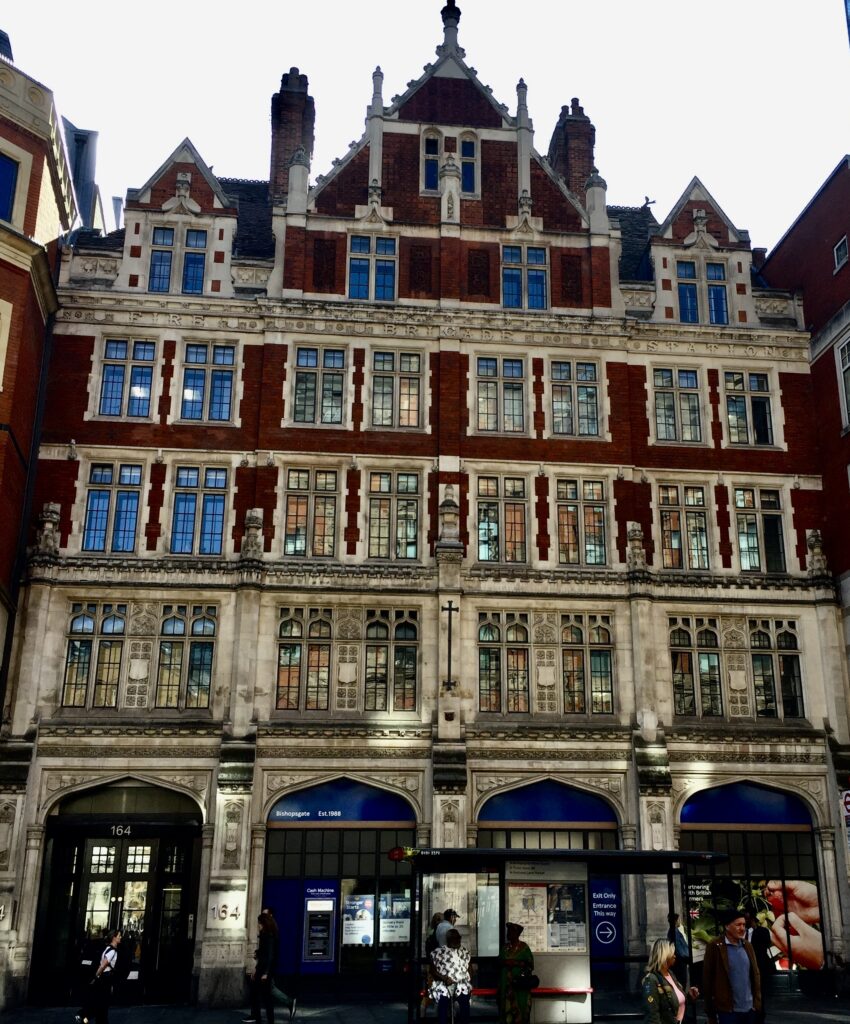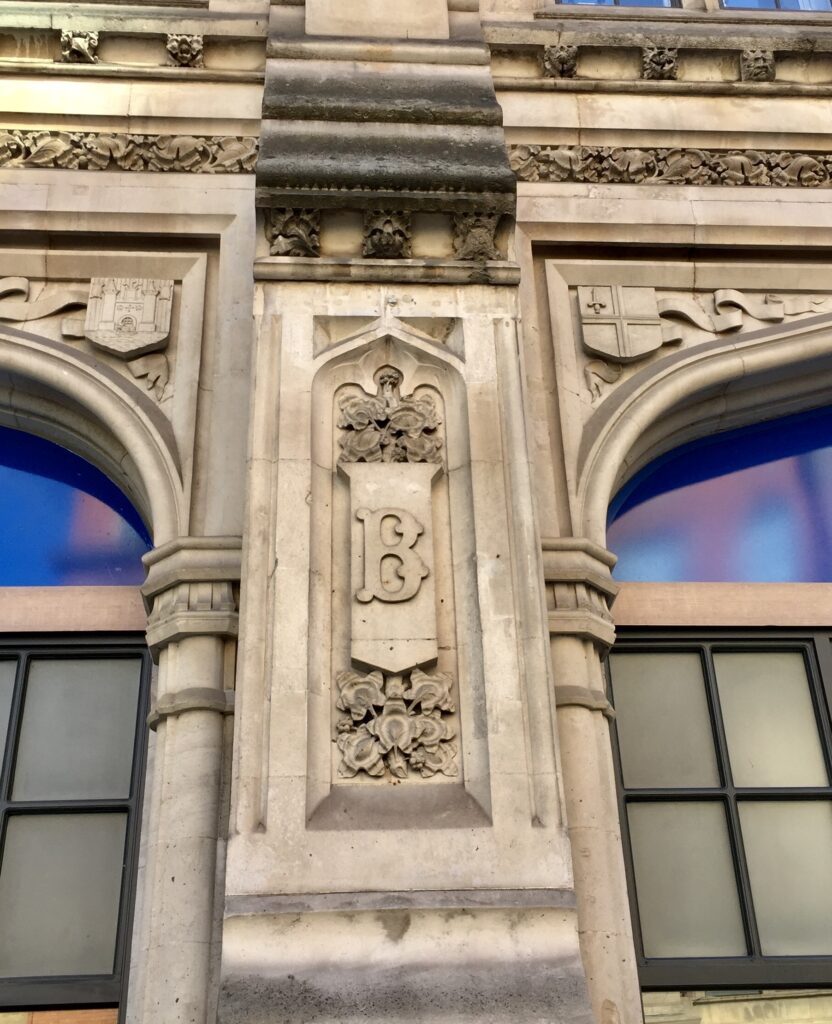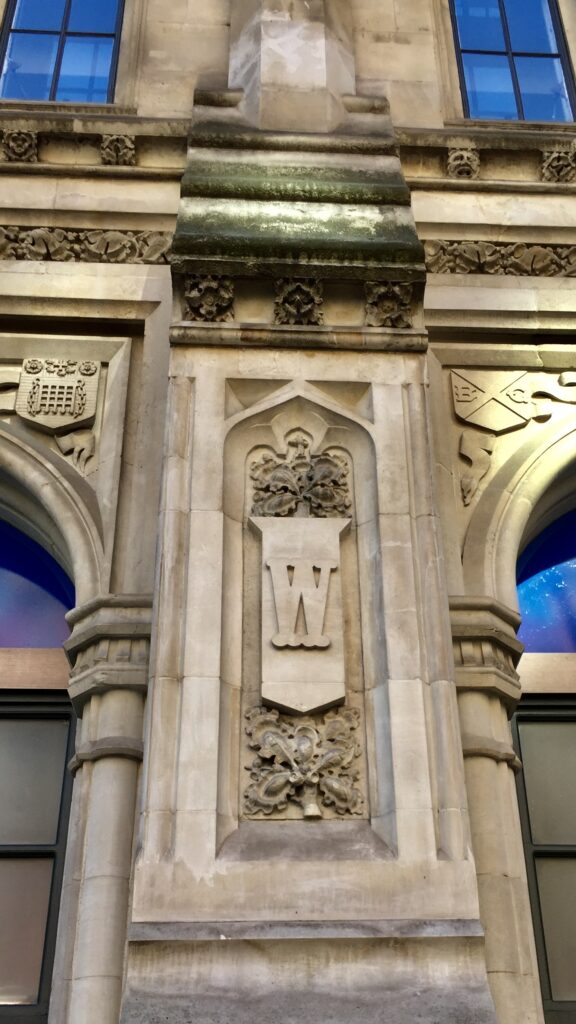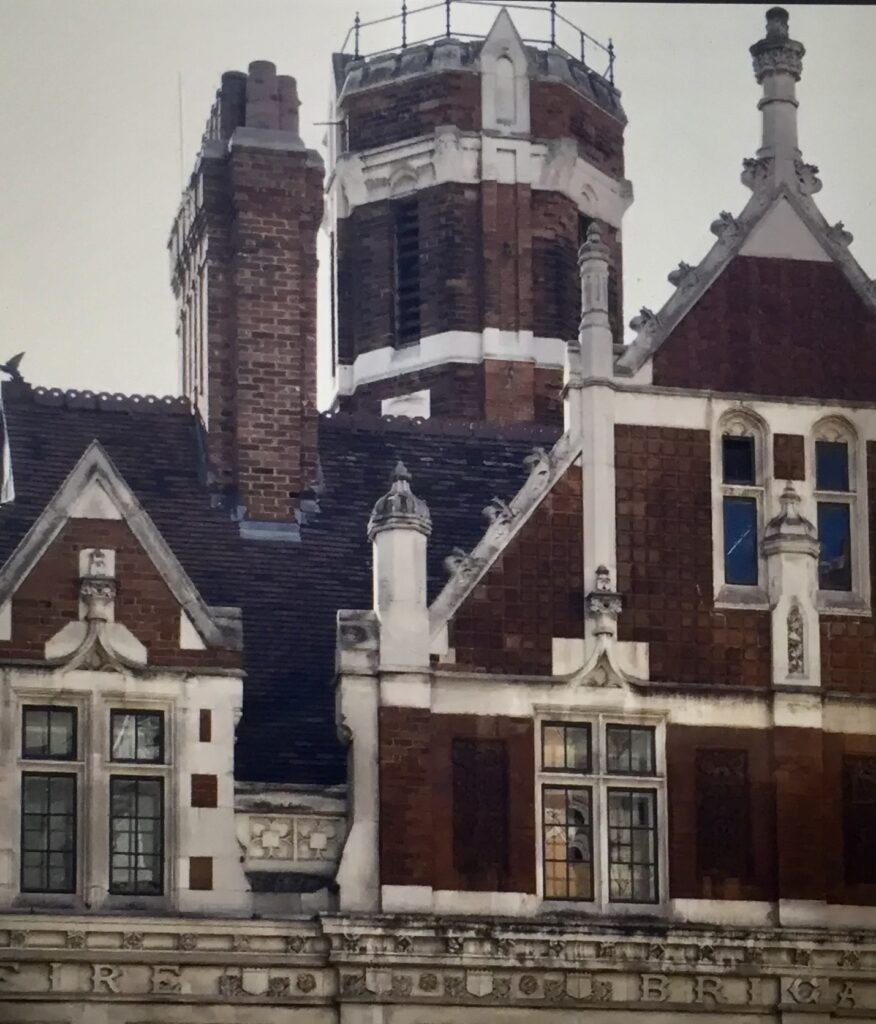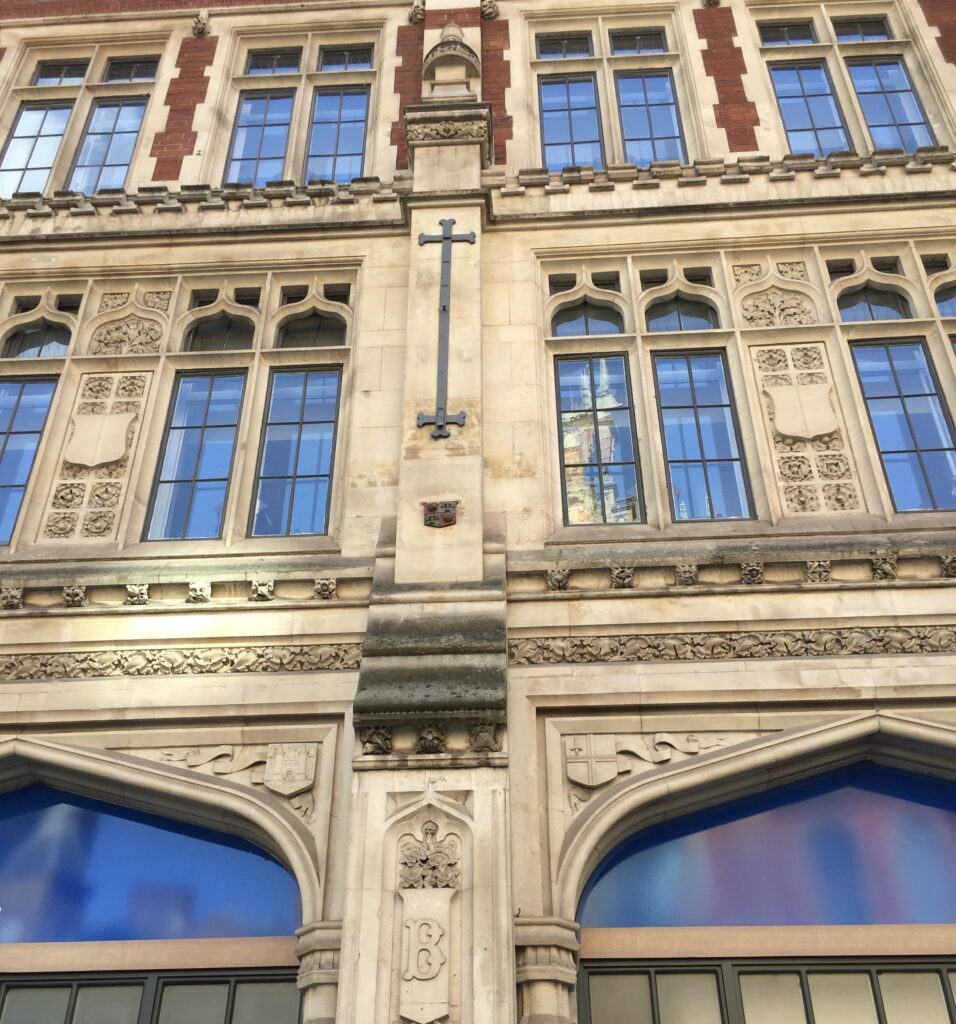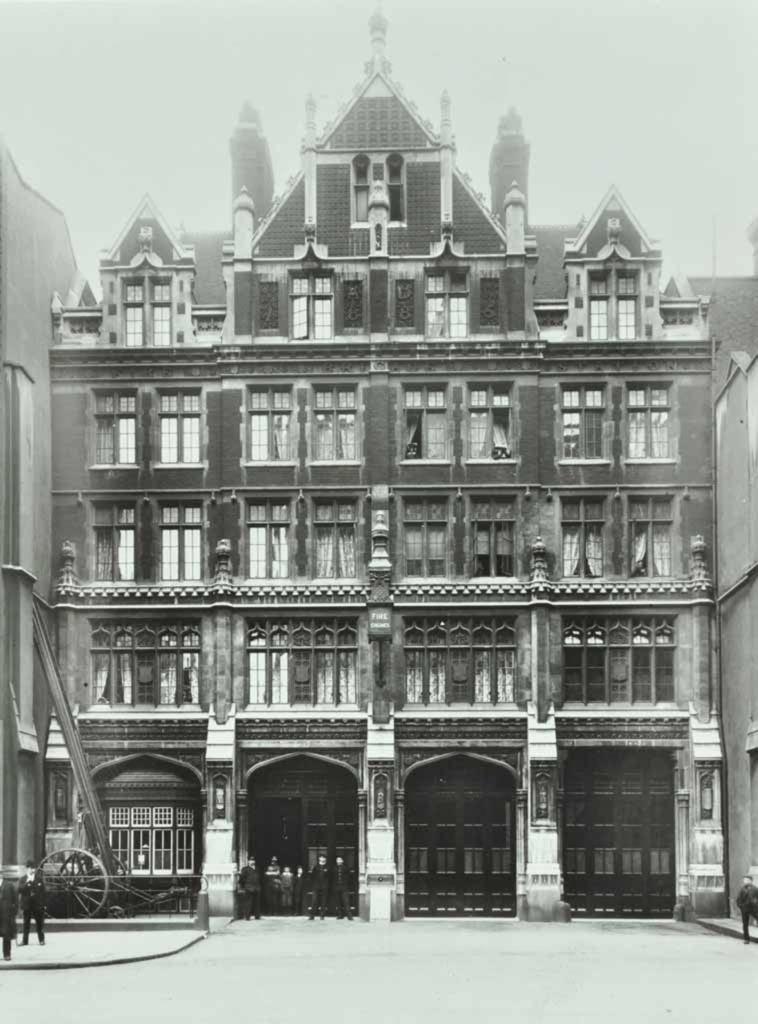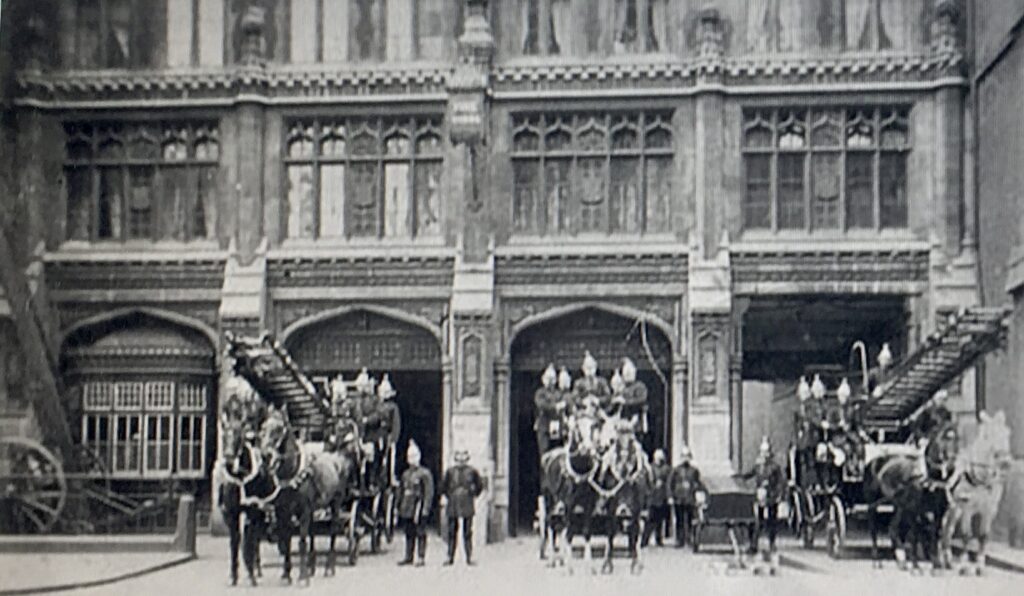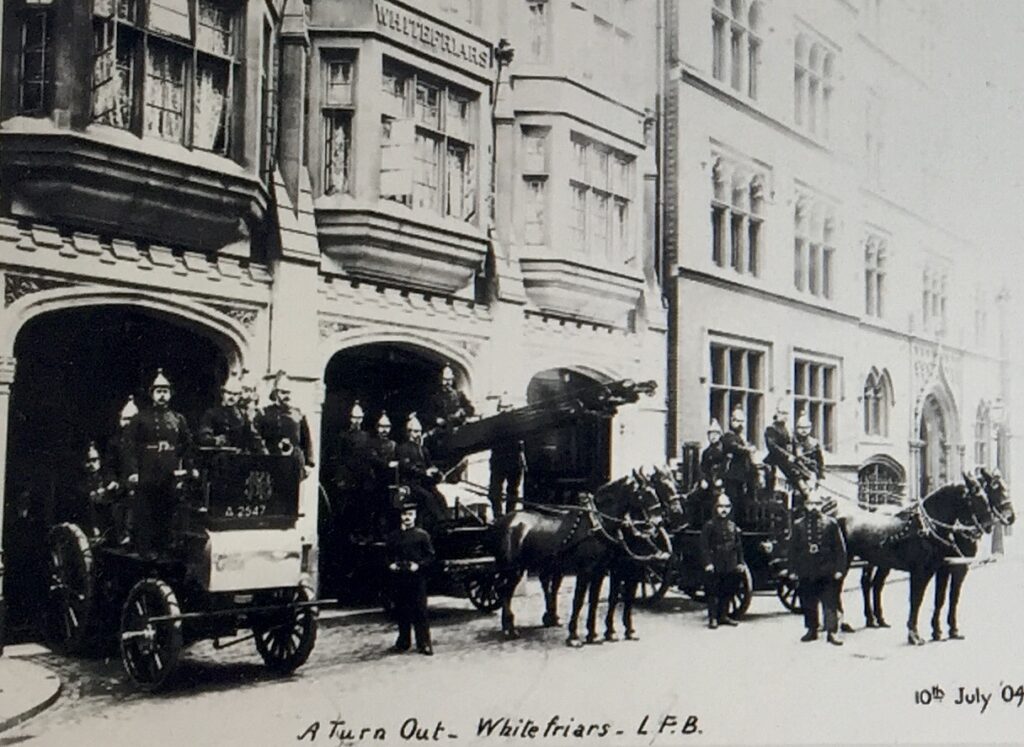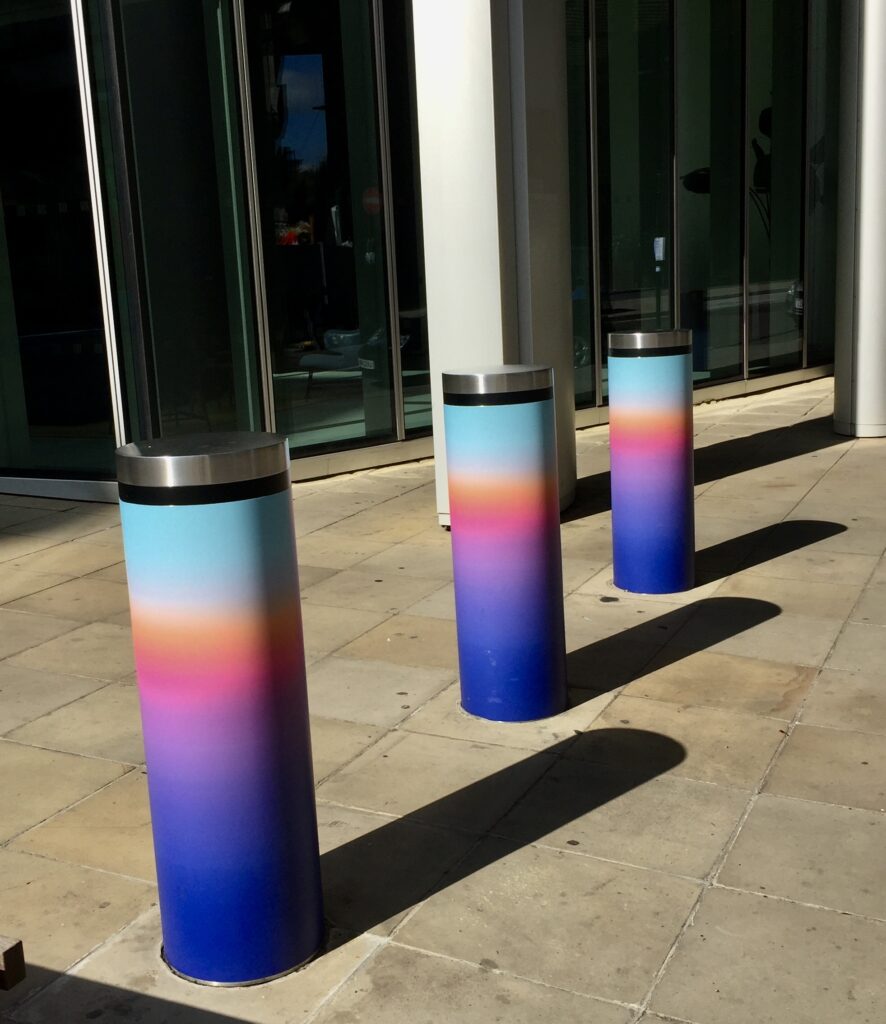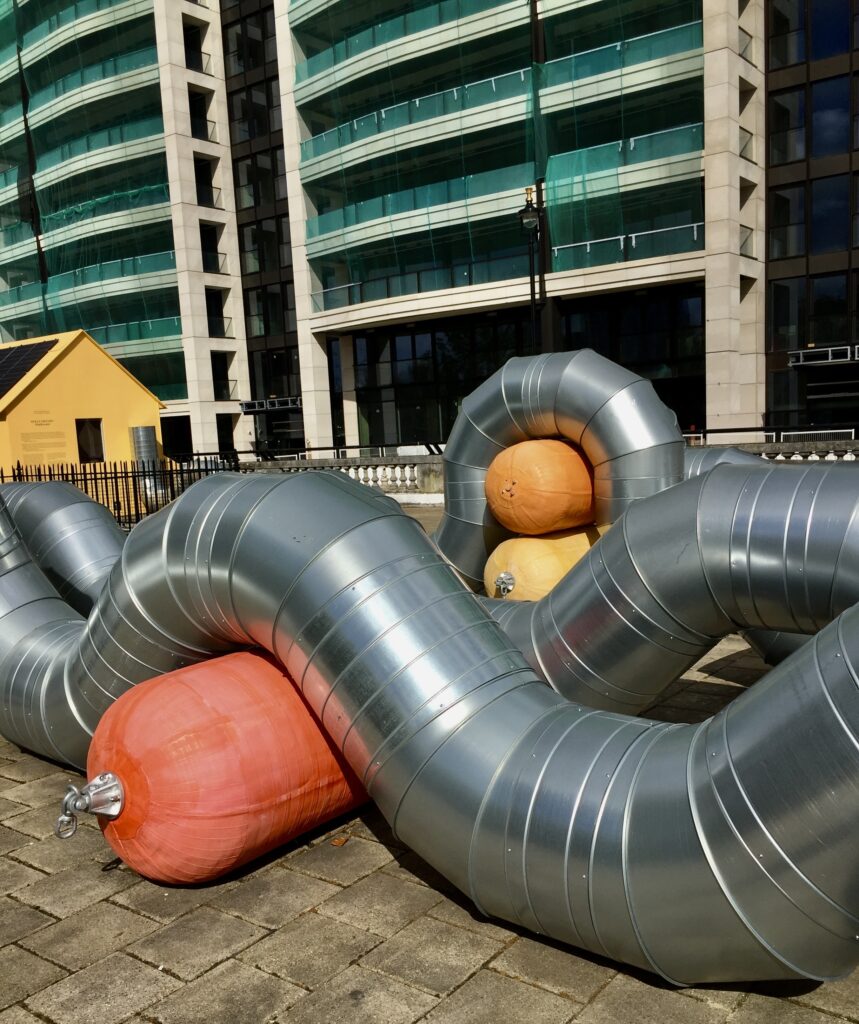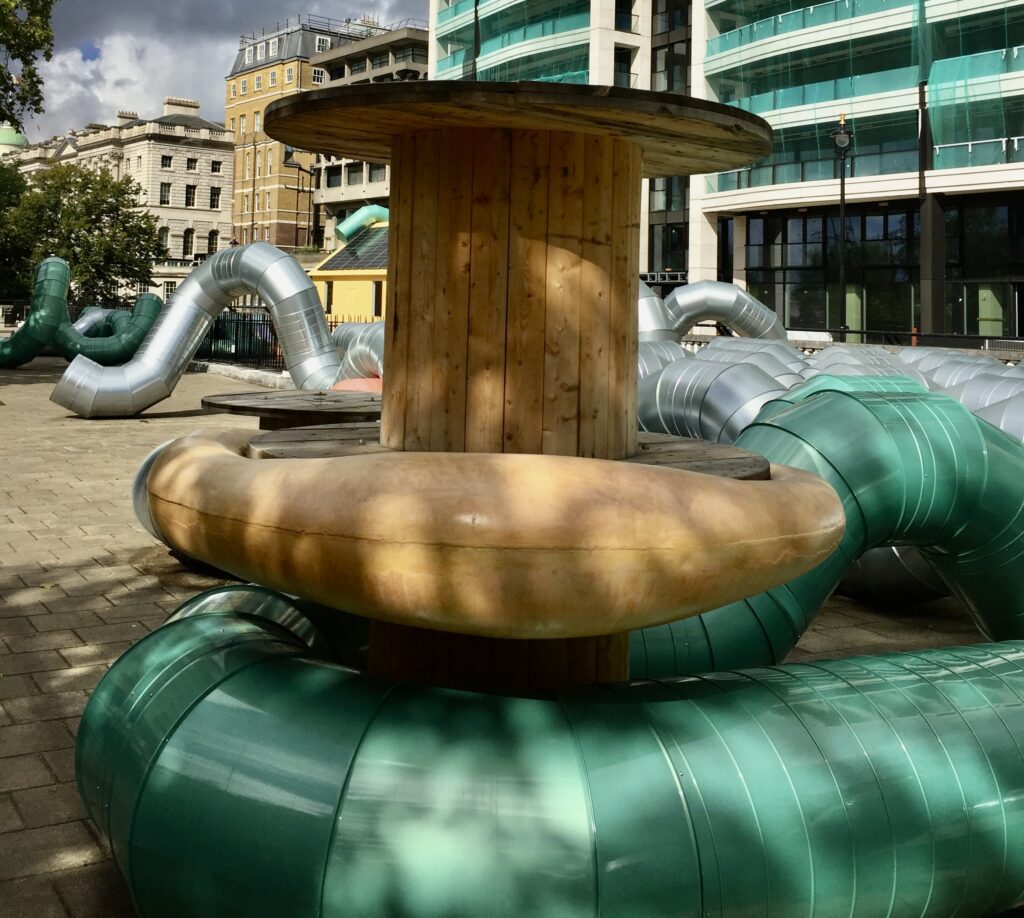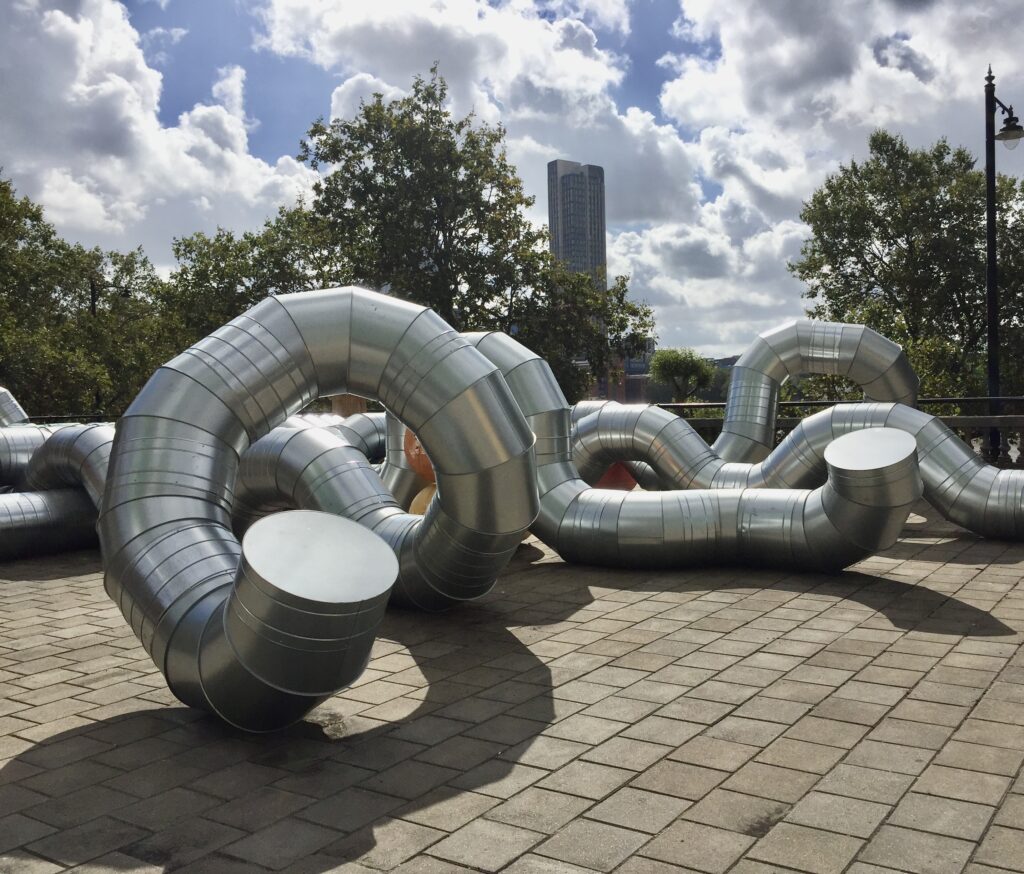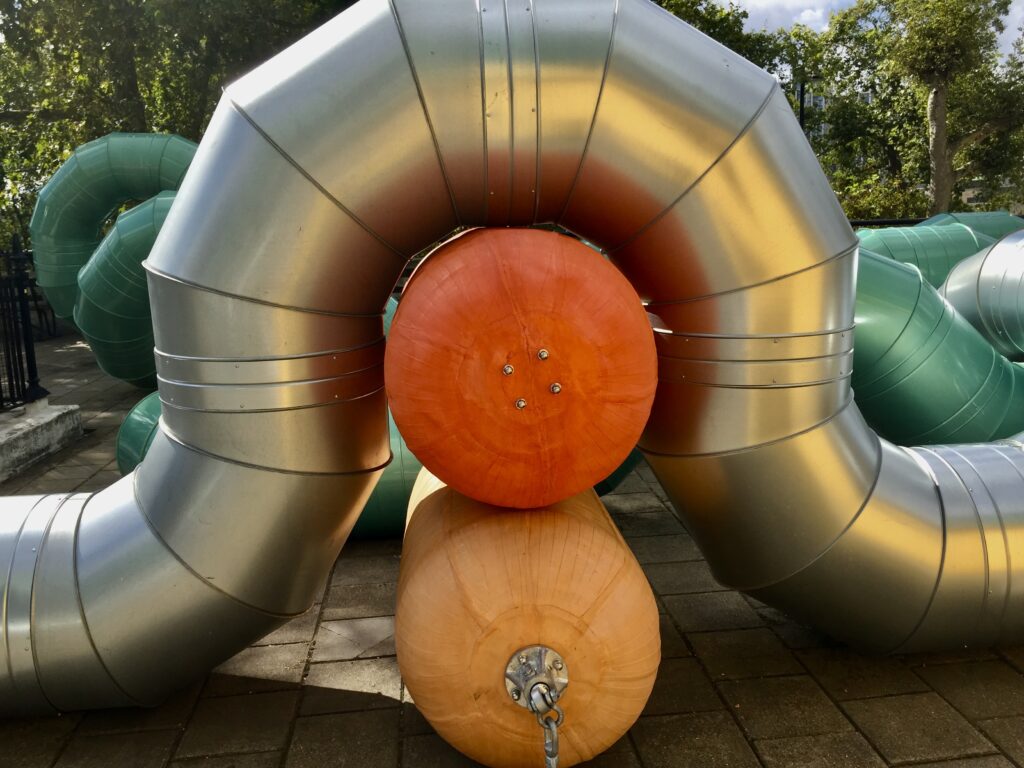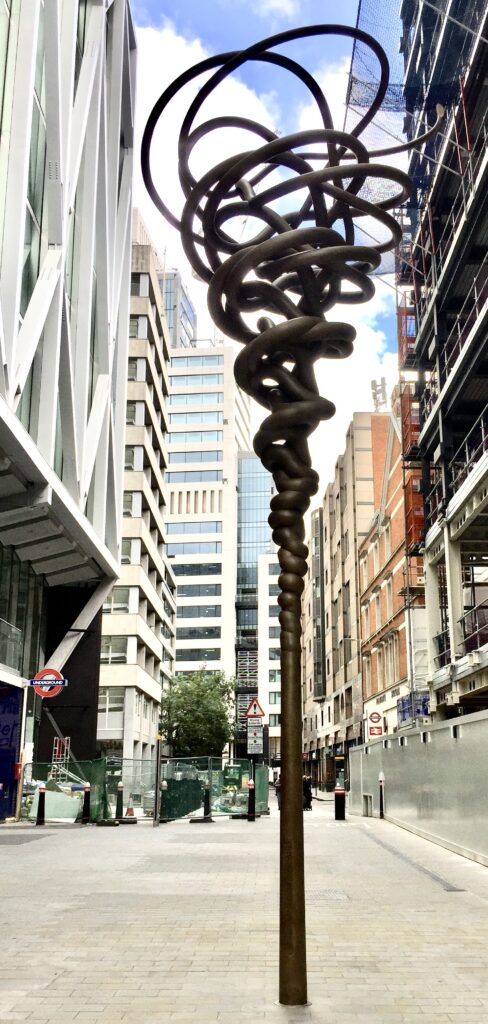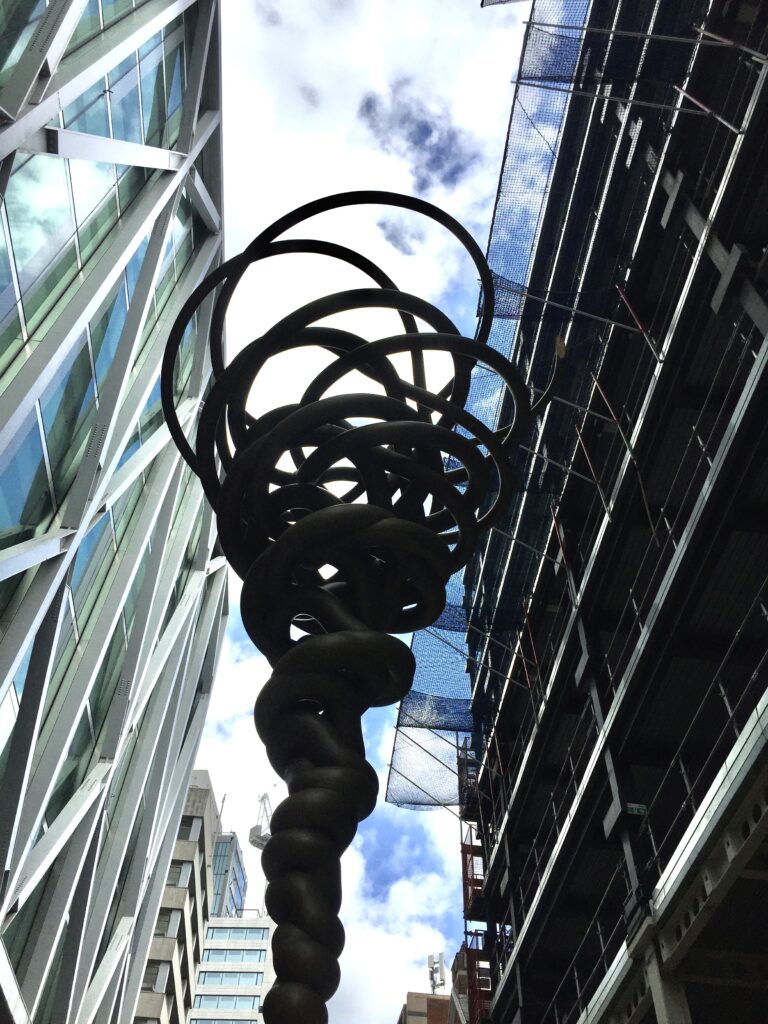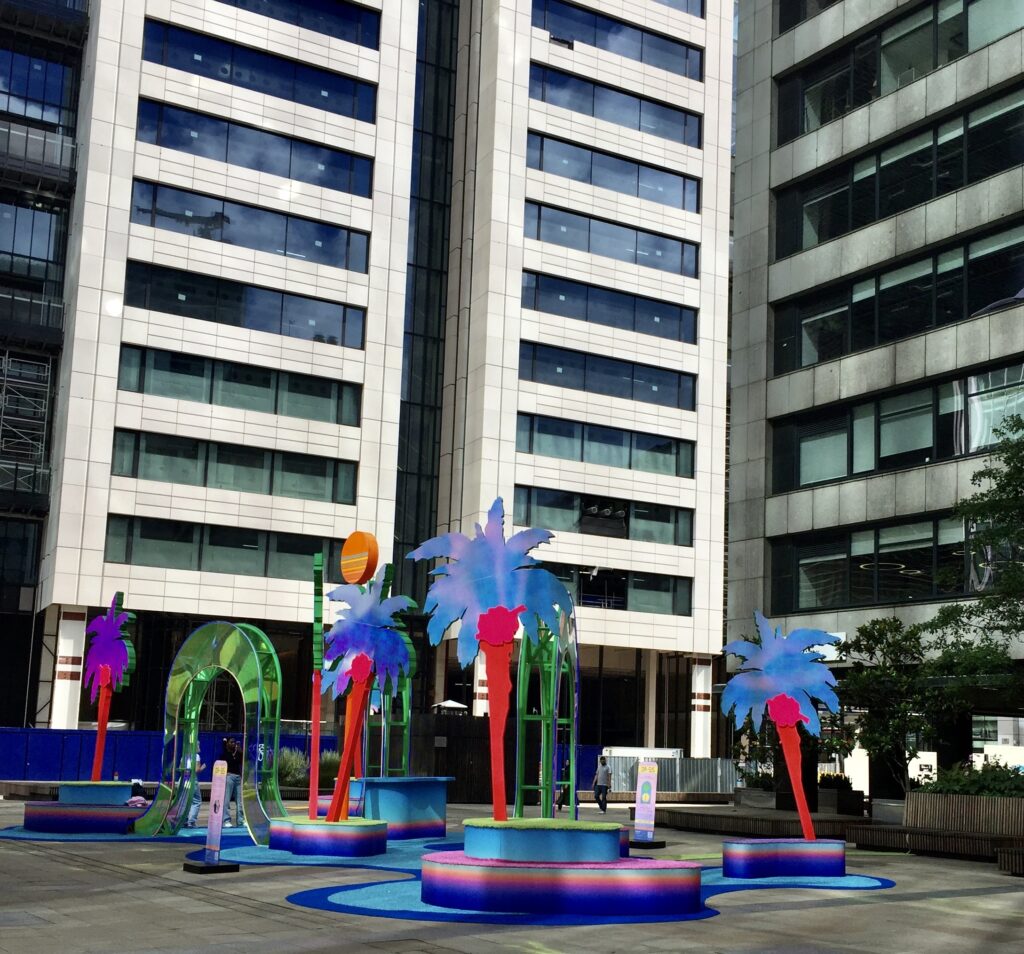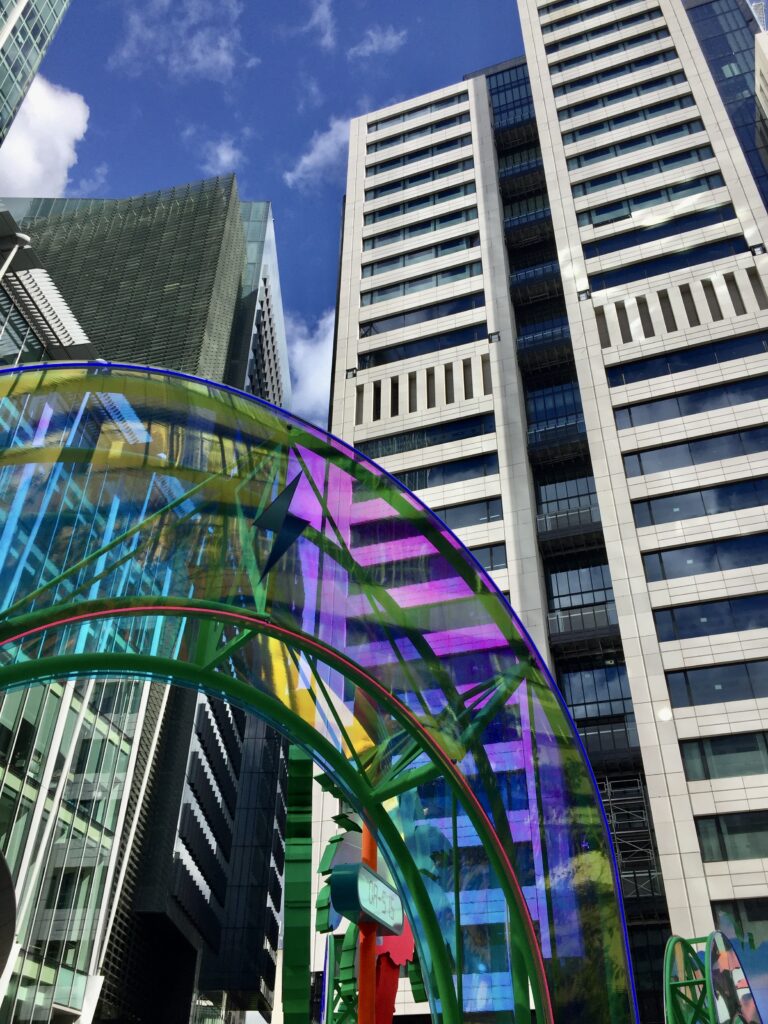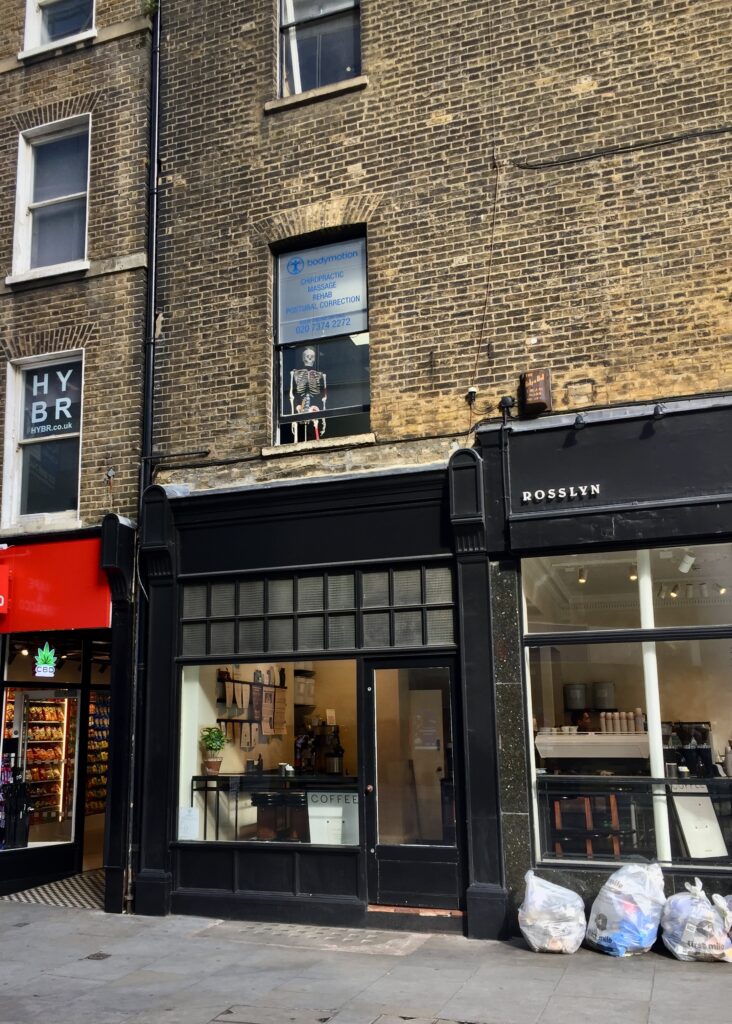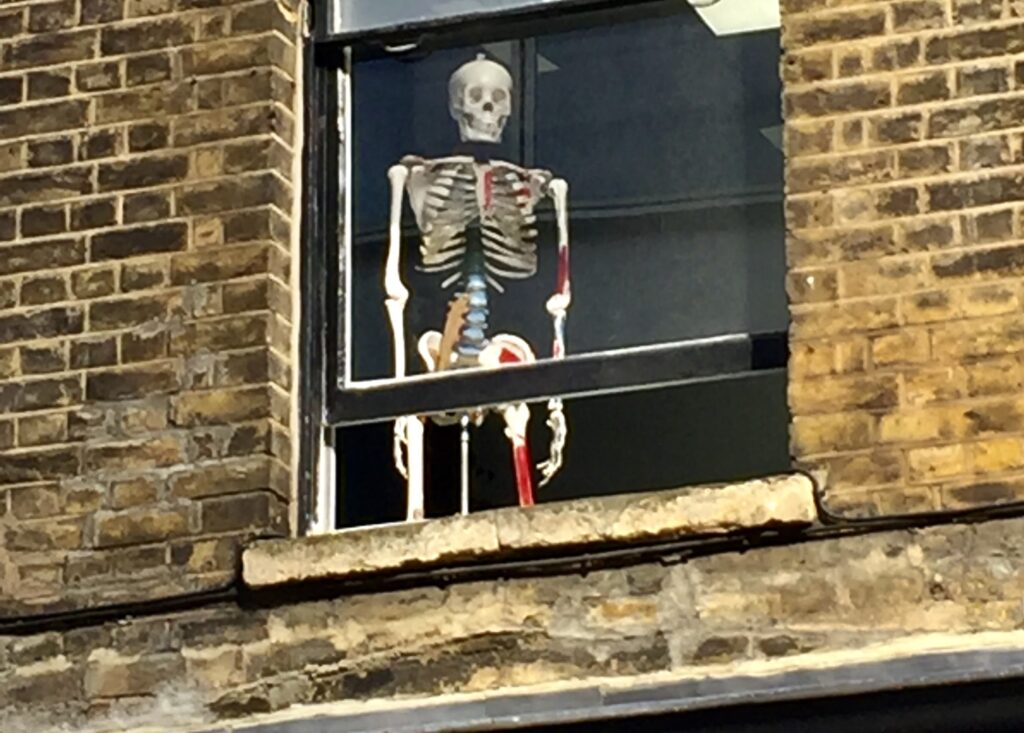If you want to have a brief experience of the St Paul’s Cathedral crypt without paying to enter the Cathedral itself just make your way down the stairs to the Crypt Cafe. The entrance is opposite the Temple Bar …
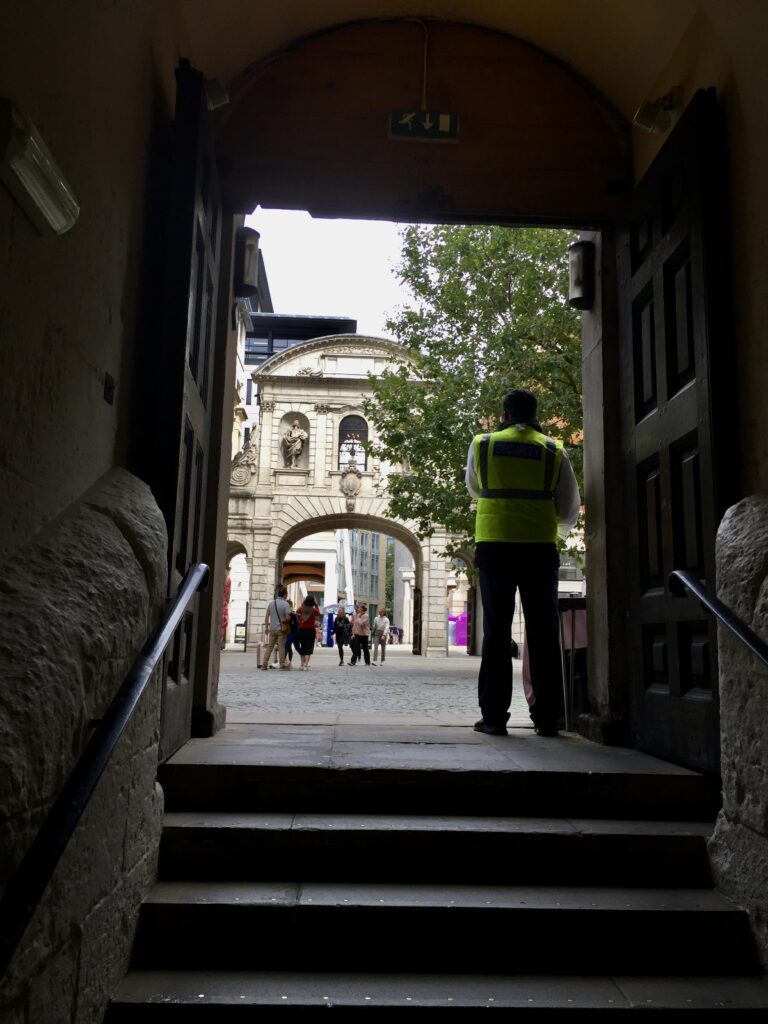
Down below you’ll encounter some extraordinary monuments to deceased heroes. This is the one to Sir William Ponsonby …

‘Created in white marble, the figure of the dying hero rests against his fallen horse. He is nude except for drapery, and a broken sword slips from the fingers of his right hand. His shield is on the ground beside him. He looks upwards at a winged female figure in a classical tunic, representing Victory, who approaches from the left. She holds a wreath above him, and he reaches for it with his left hand’ …
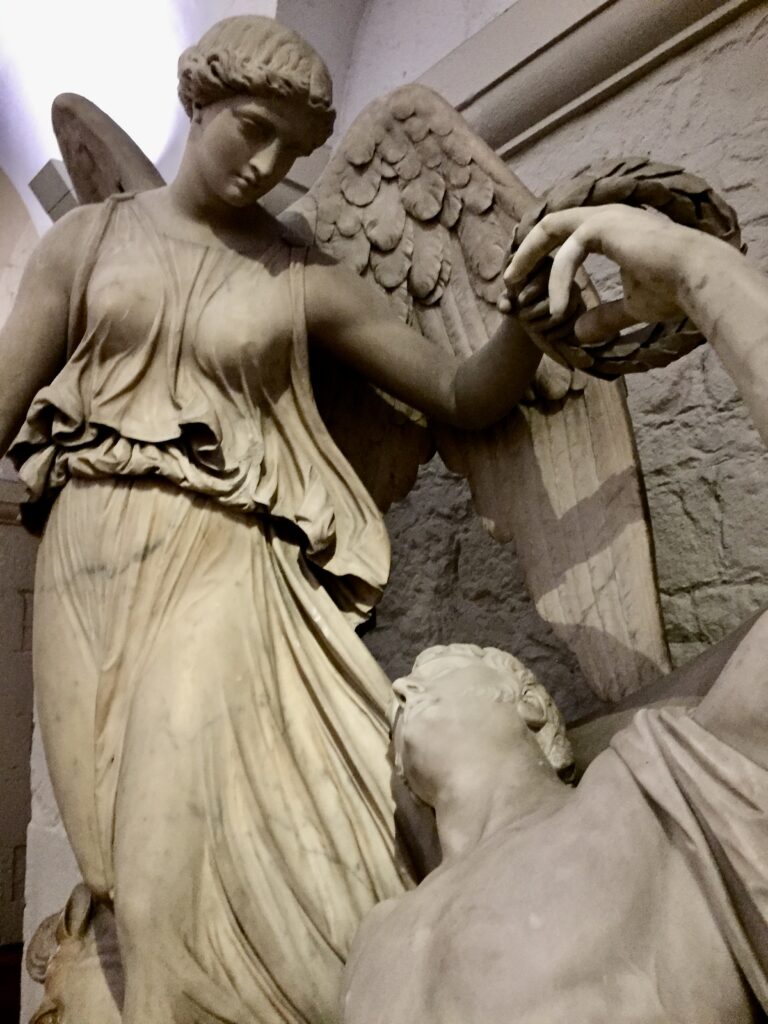

You can read more about his background along with the gripping story of his final battle on the Waterloo Association website.
Nearby is this monument to two Naval heroes …
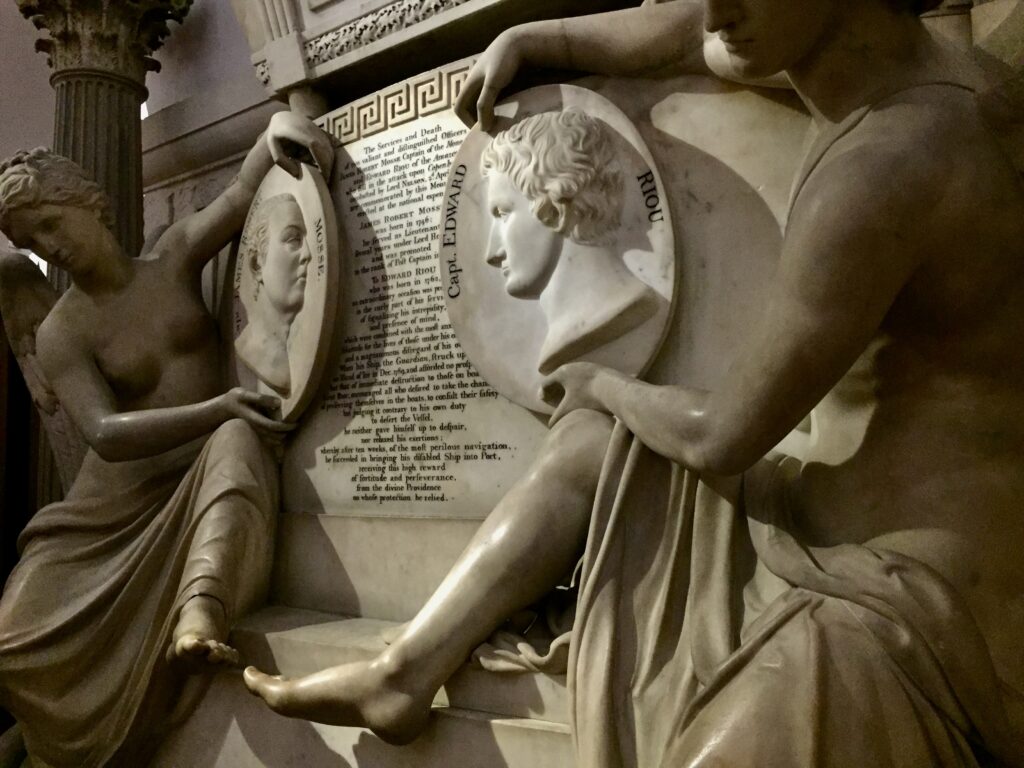
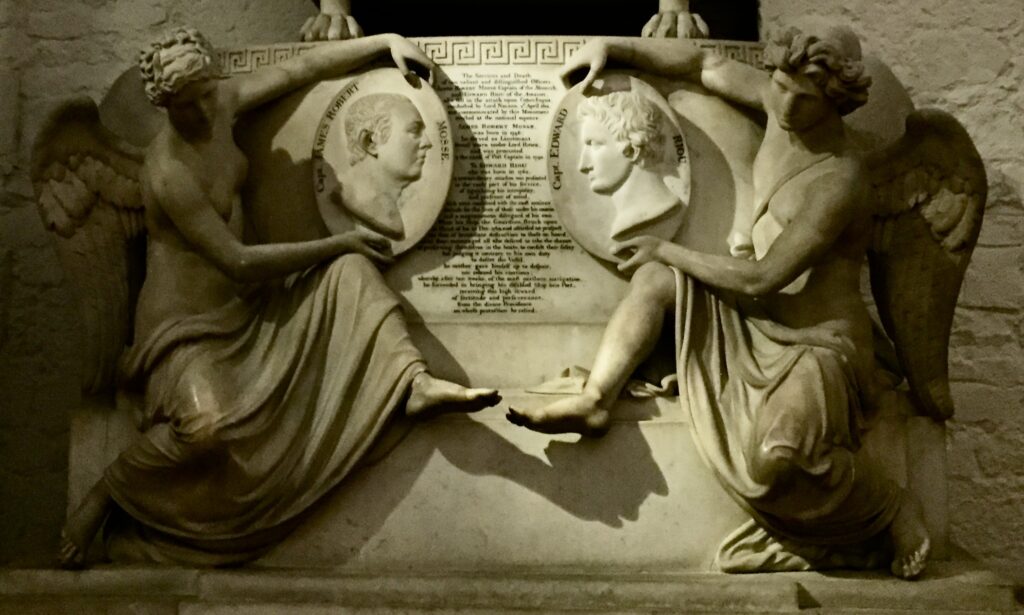
Both men died in the 1801 Battle of Copenhagen.
Riou ‘ … …was sitting on a gun, was encouraging his men, and had been wounded in the head by a splinter. He had expressed himself grieved at being thus obliged to retreat, and nobly observed, ‘What will Nelson think of us?’ His clerk was killed by his side; and by another shot, several marines, while hauling on the main-brace, shared the same fate. Riou then exclaimed, ‘Come, then, my boys, let us all die together!’ The words were scarcely uttered, when the fatal shot severed him in two’.
In 1799 James Mosse was appointed Captain of HMS Monarch, also under the overall command of Admiral Nelson. Mosse took a leading role, sailing from one end of the line to the other, whilst both firing and receiving fire. He was killed soon after adopting his required position, his last orders being to ‘cut away the anchor’. Like Riou, he was buried at sea …
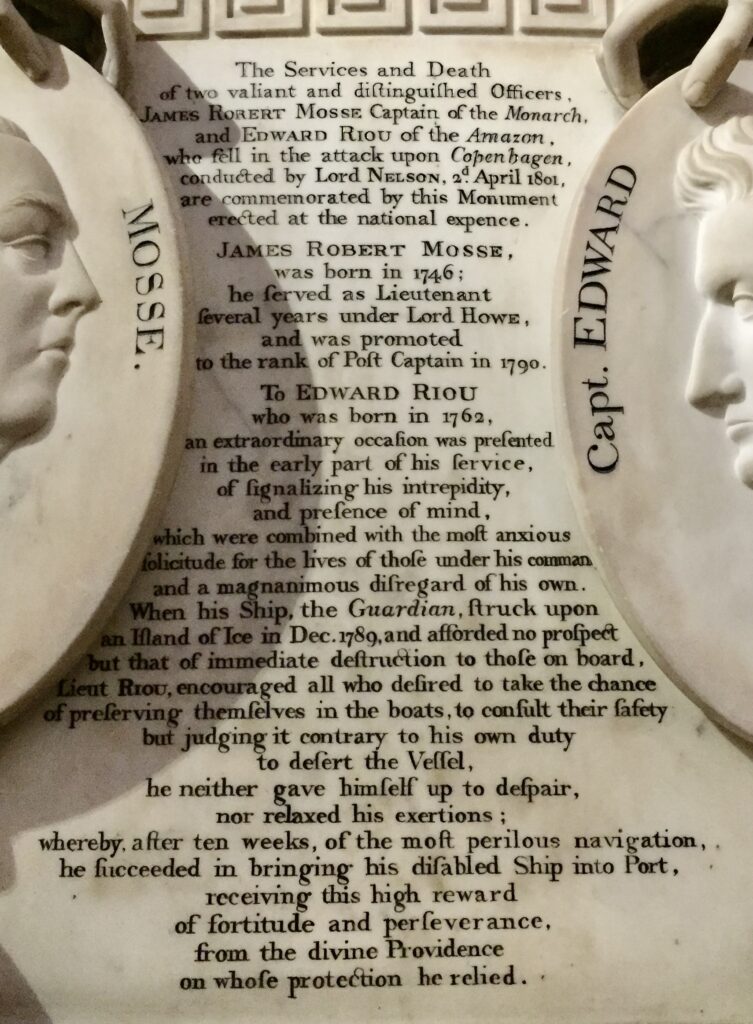
If you look through the gates to the main crypt area you can just see in the distance the tomb of their commander, Horatio Nelson …
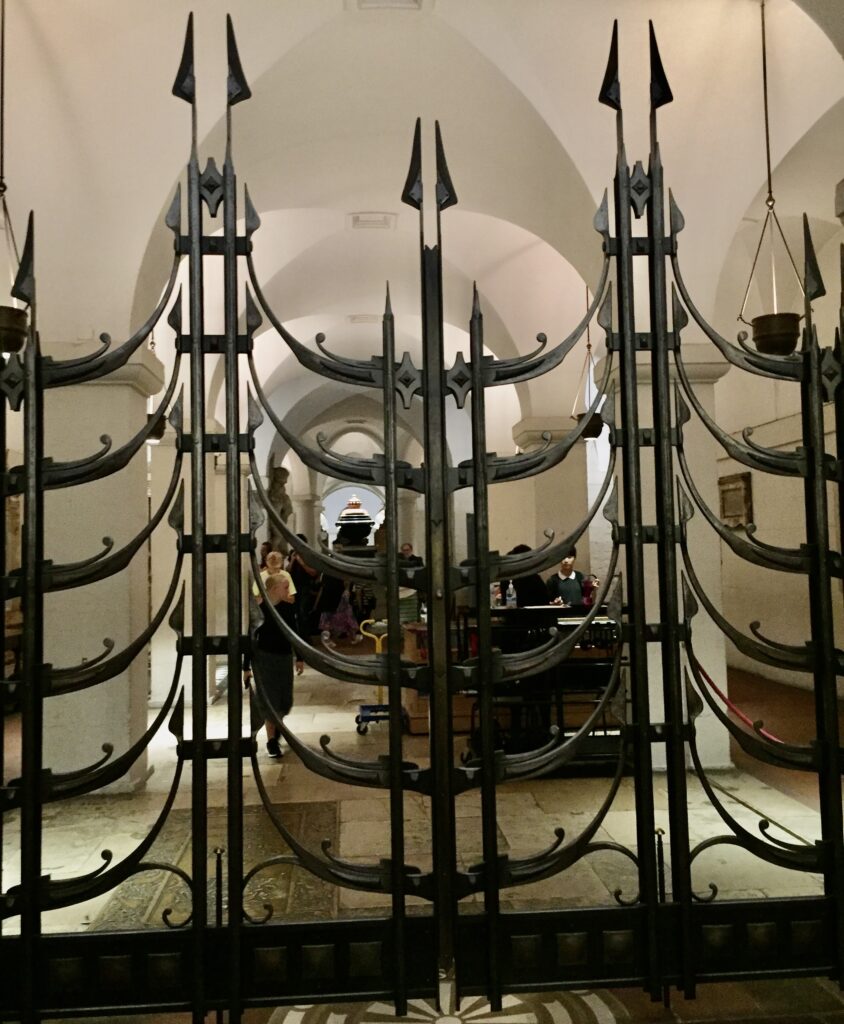
Here’s a picture I took on an earlier visit …

After all that death and drama you might like some of the images of flowers I have been taking!
Good corporate neighbours on Gresham Street …
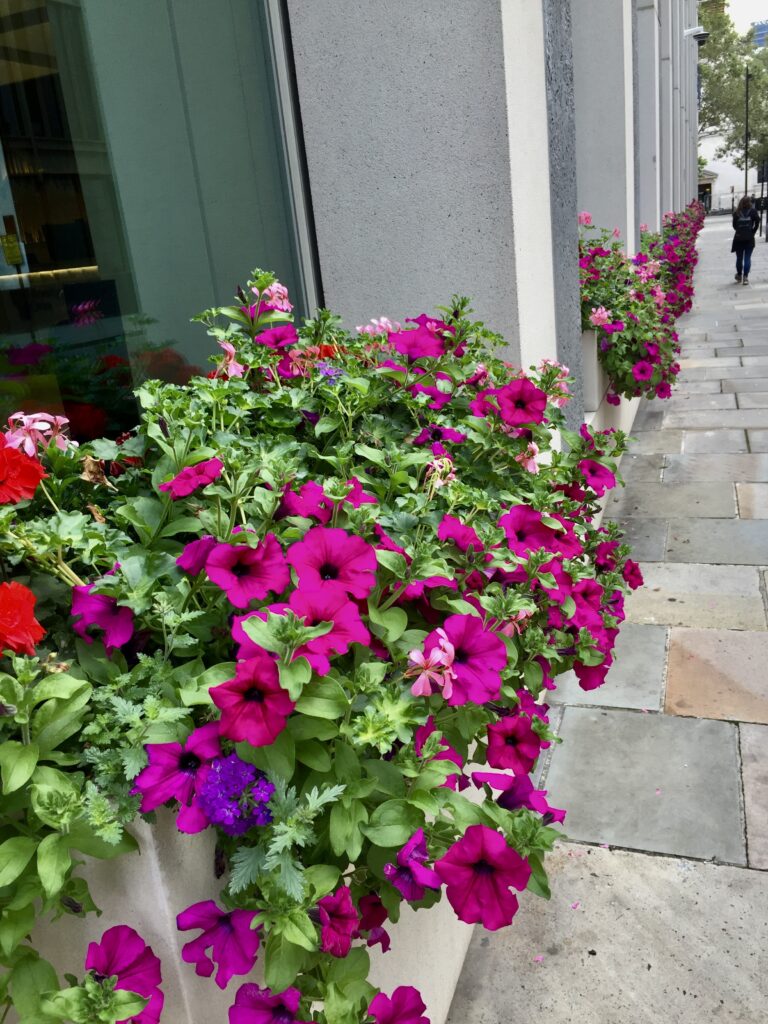
Also on the same street, the Goldsmith’s Garden (the old churchyard of St John Zachary) …
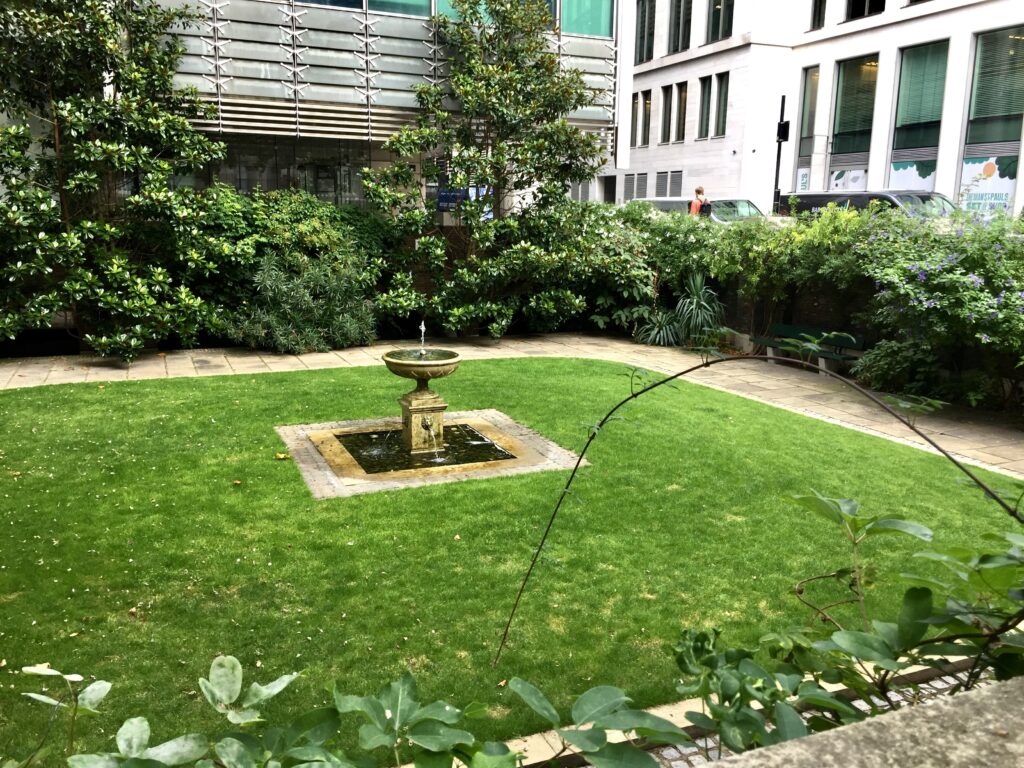
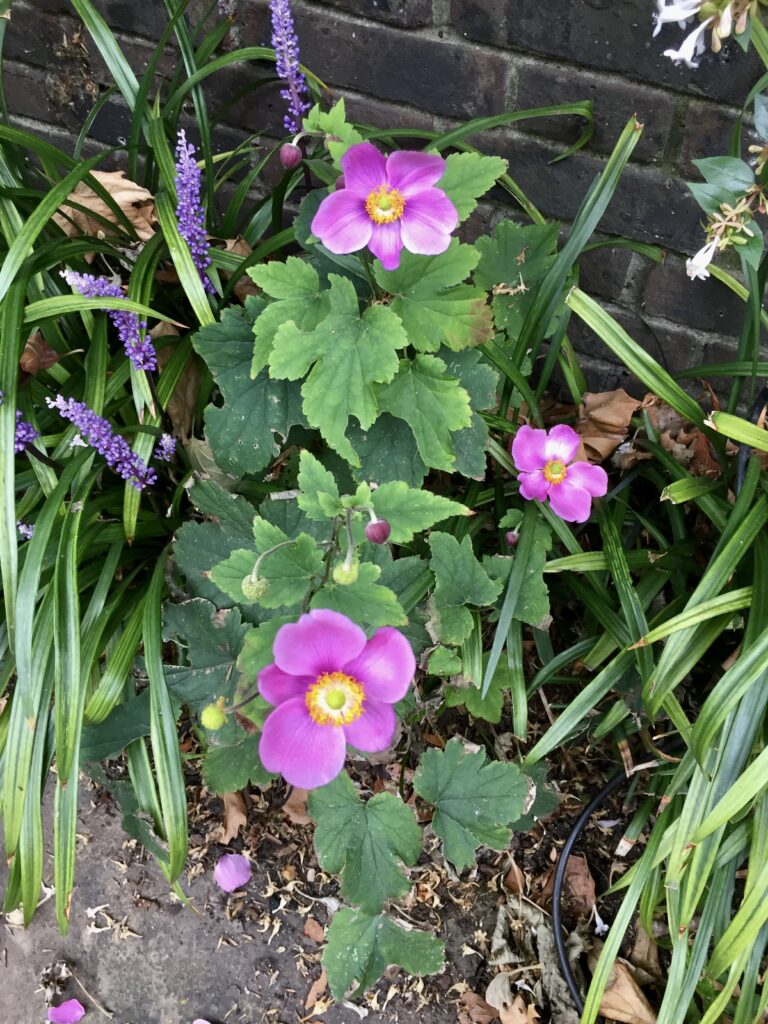

A Goldsmith’s leopard guards the entrance …
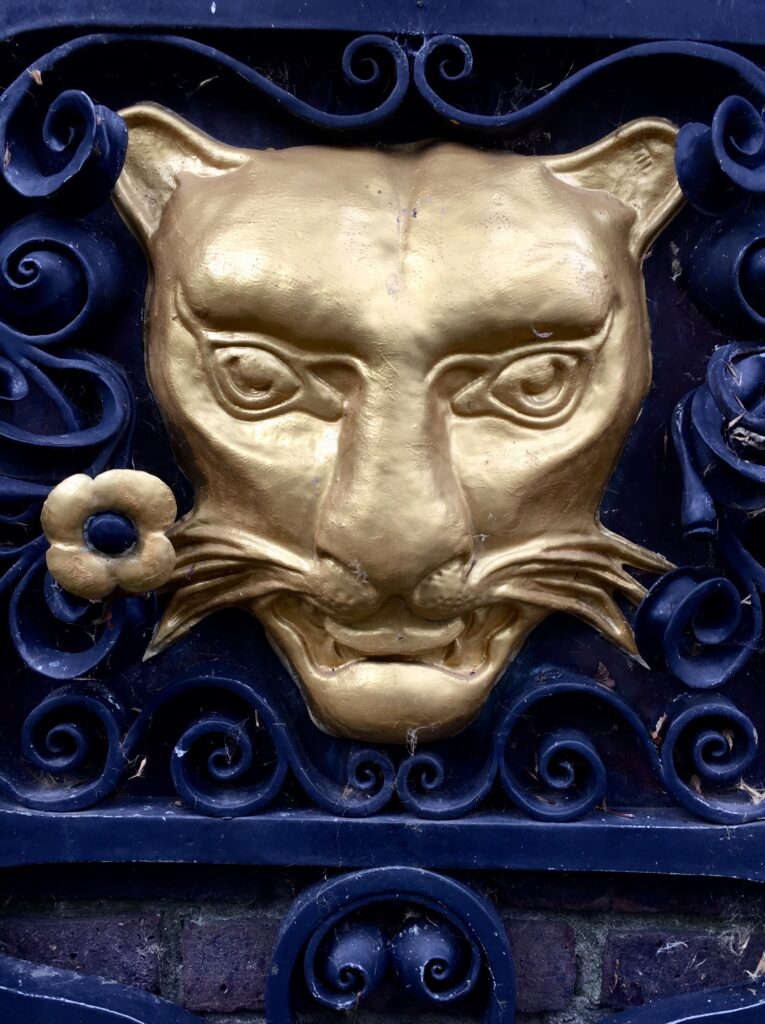
Across the road …
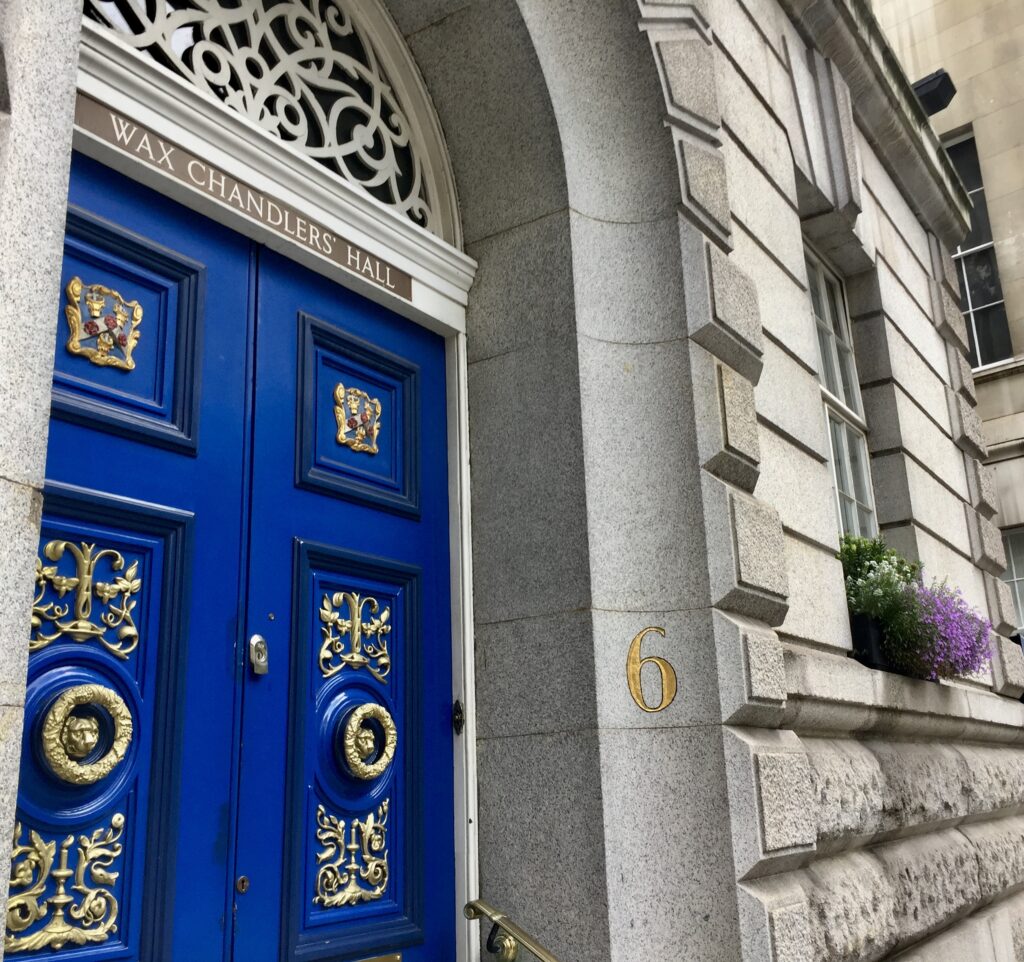
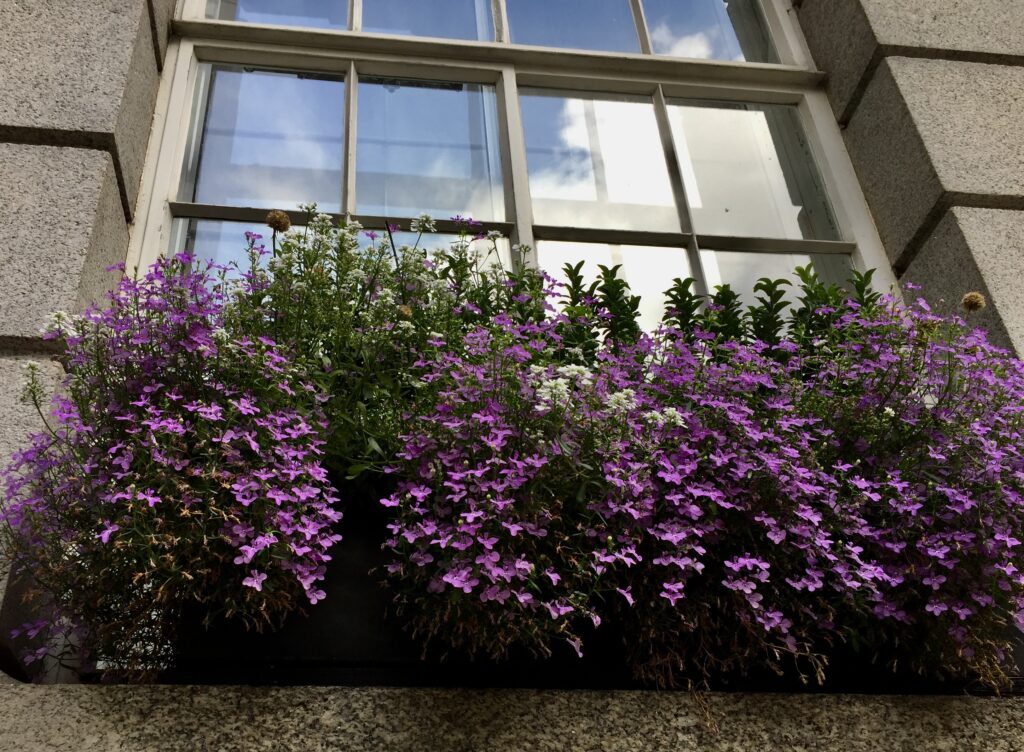
Opposite St Paul’s underground Station …
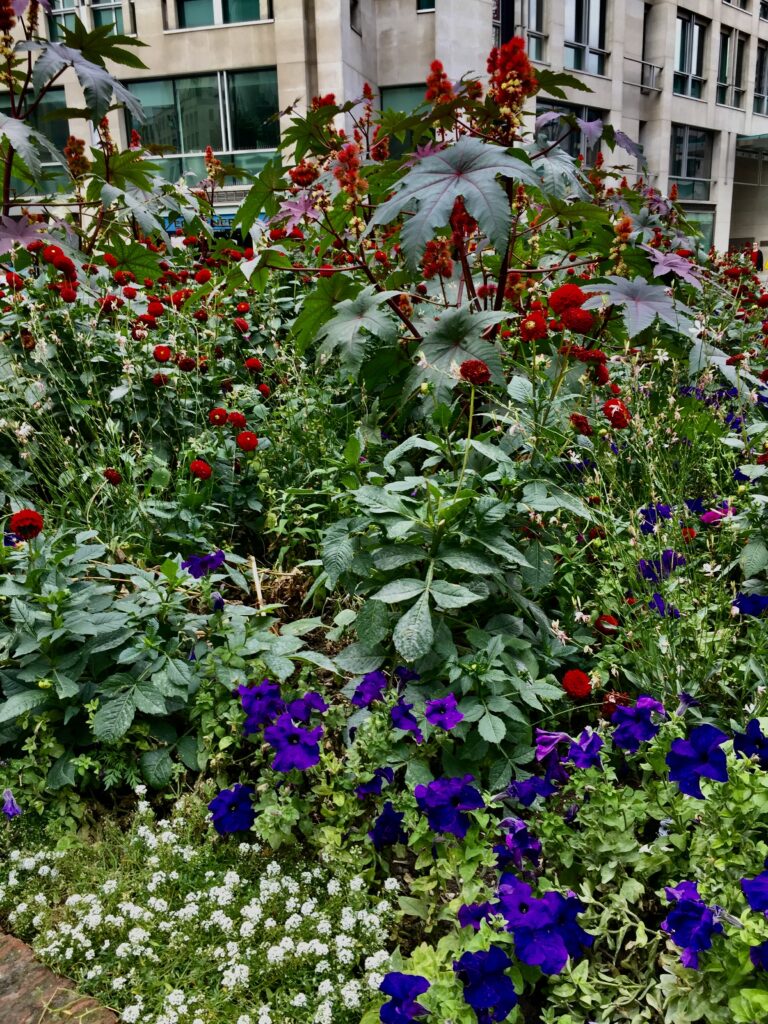
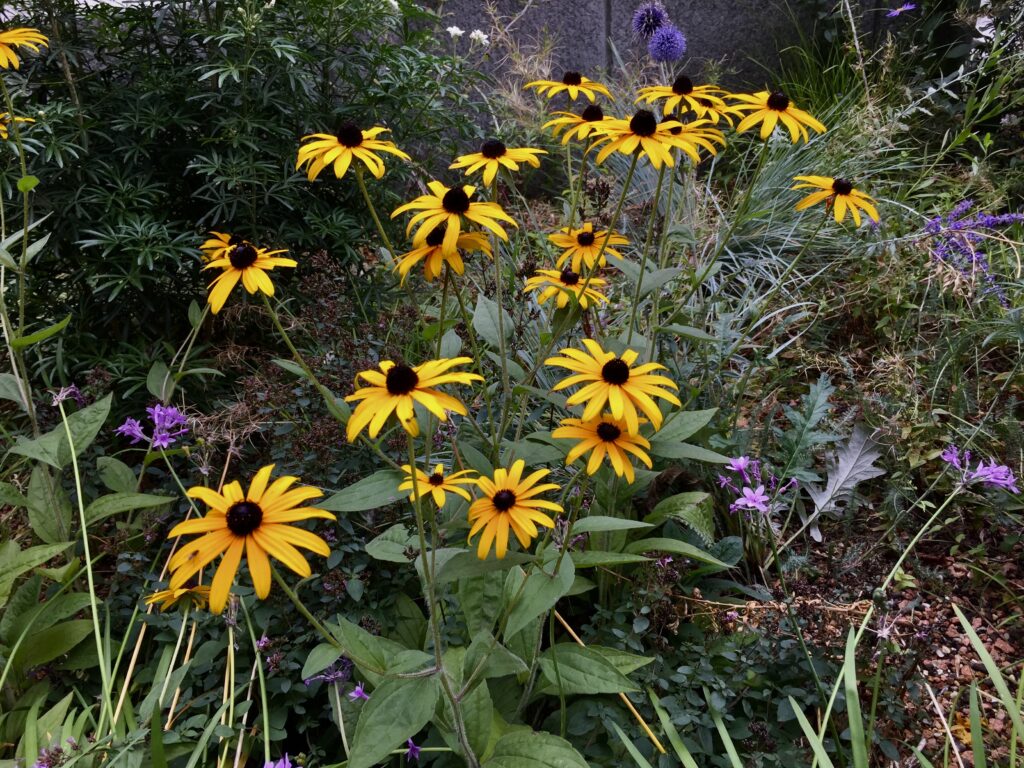

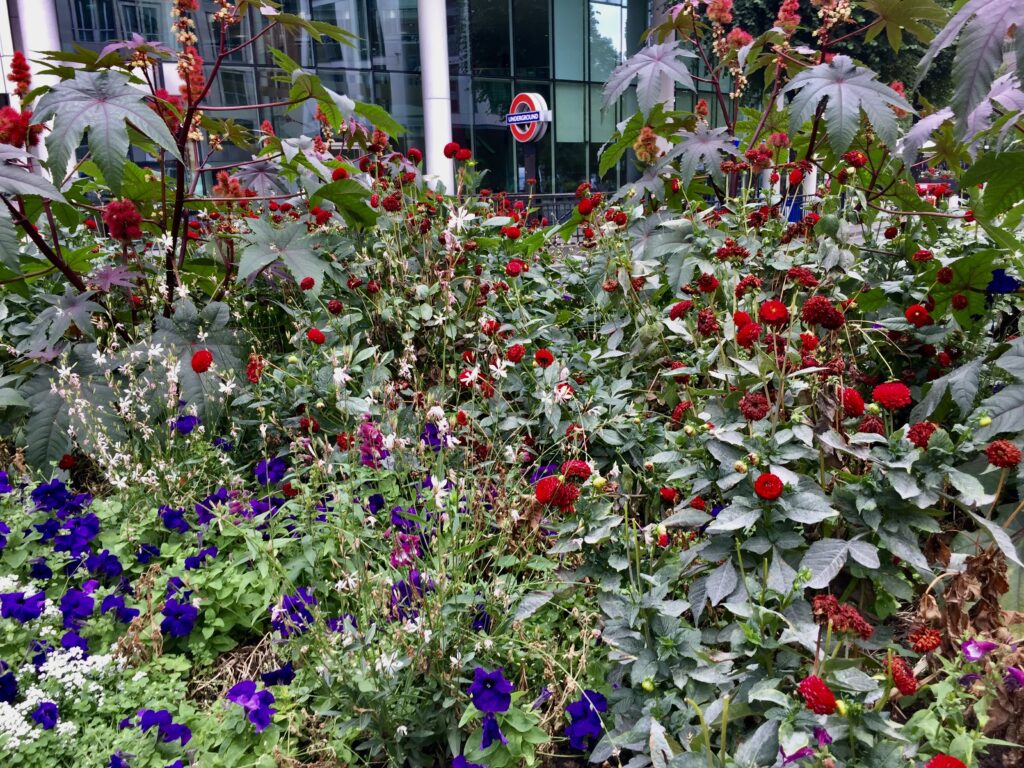
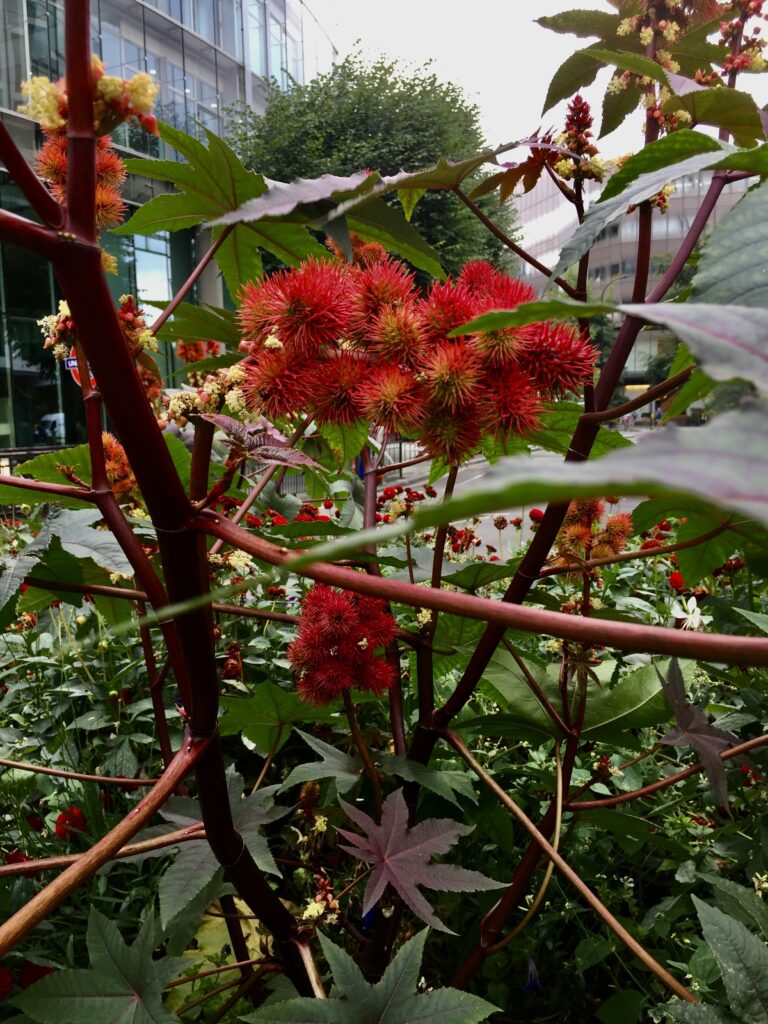
Near St Paul’s Cathedral …

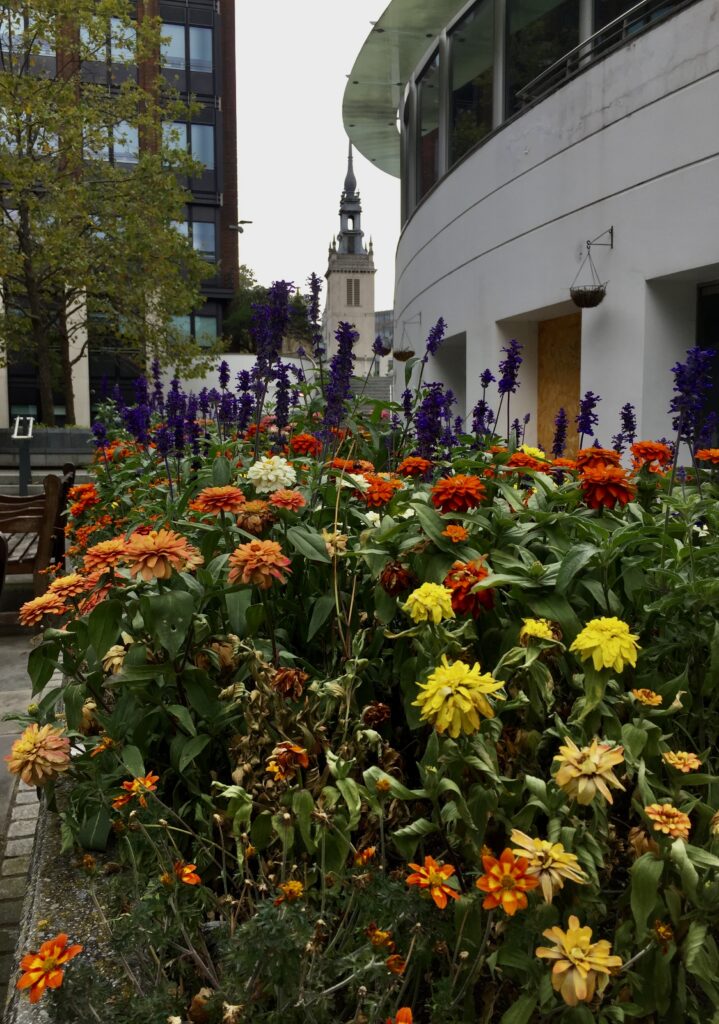


At Aldermanbury …
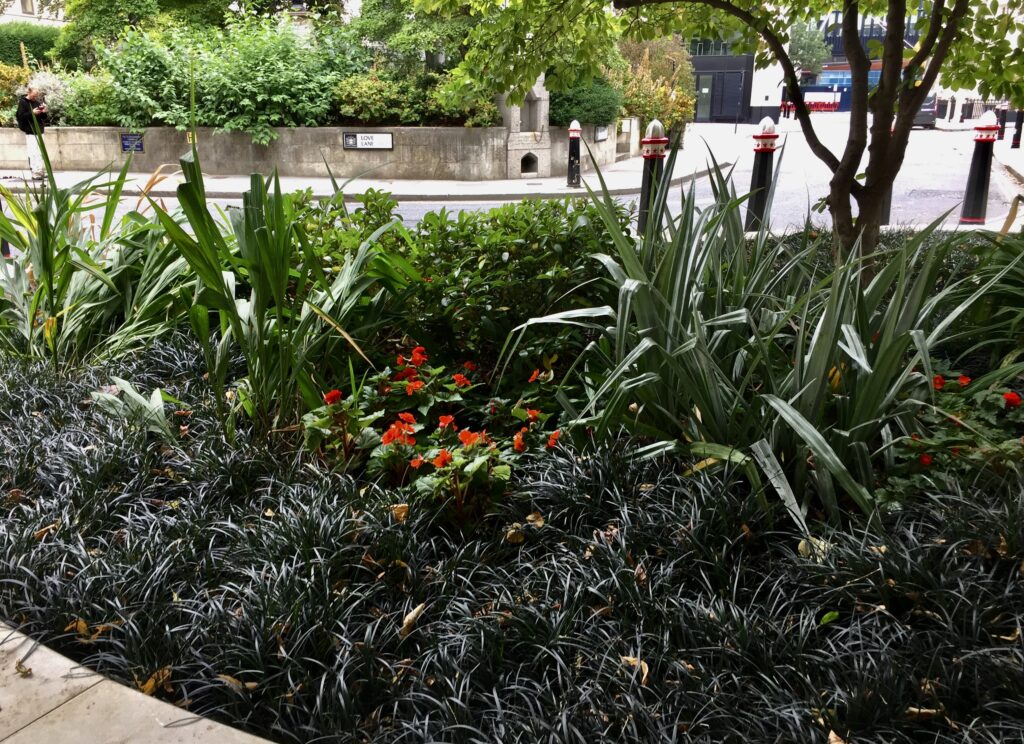
The Silk Street flower bed. From planting on 22nd June …
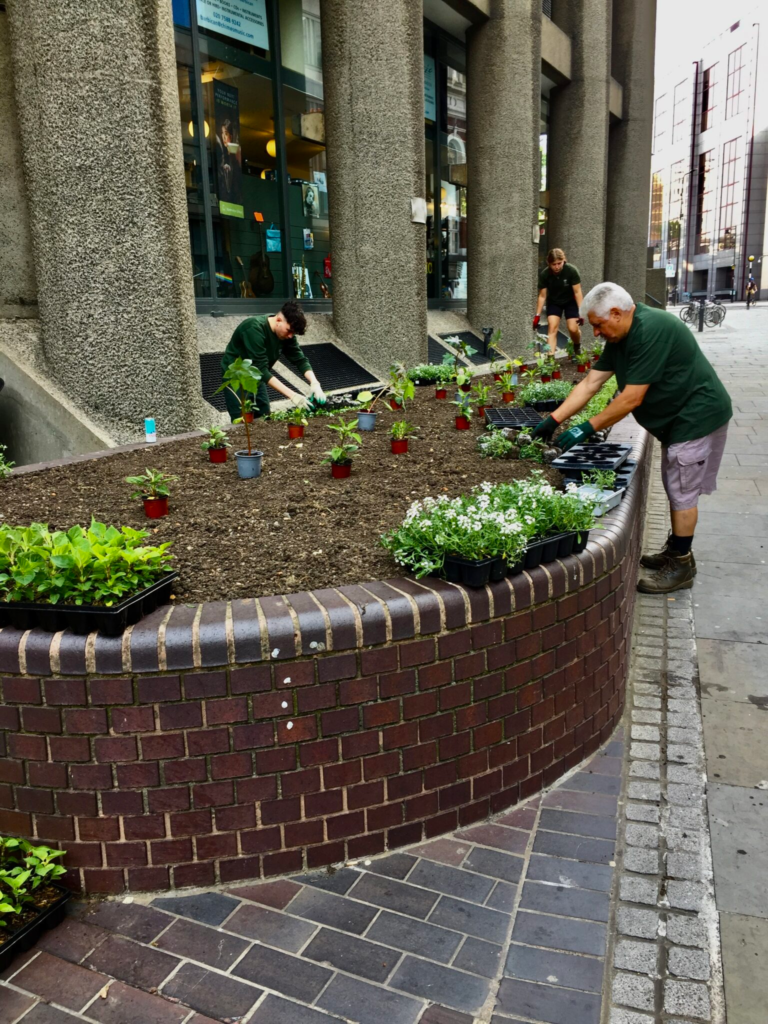
To a splendid display today …
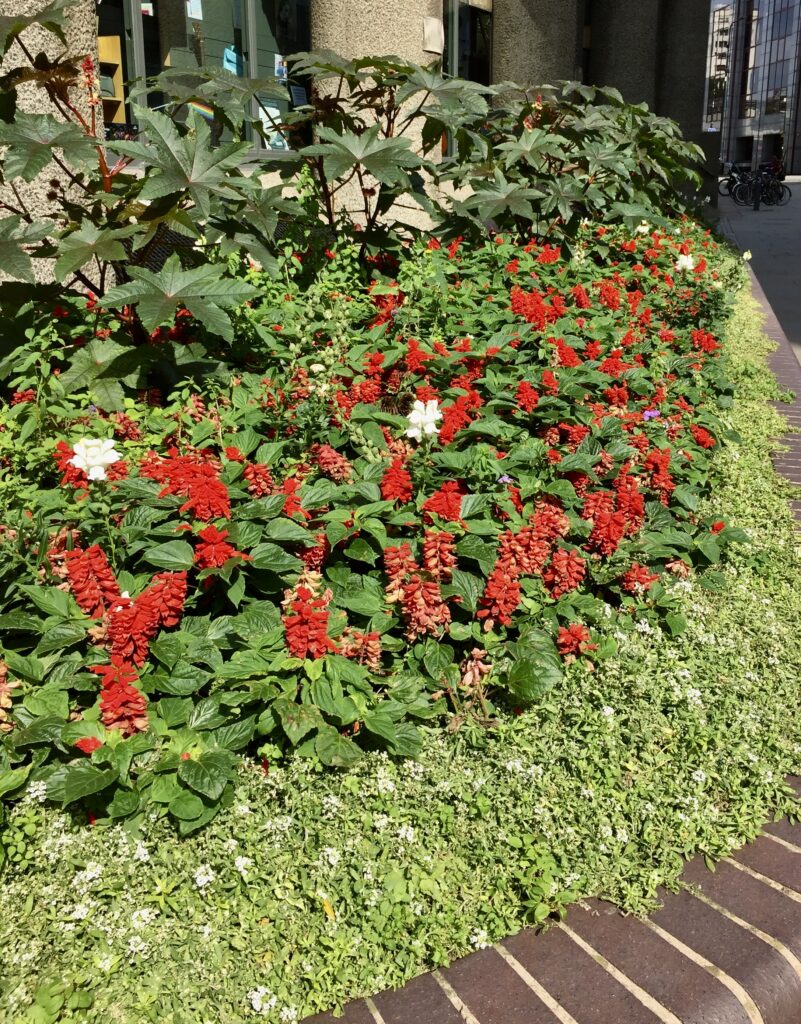
Finally, three things I have seen from or on the Barbican Gilbert Bridge.
Water lillies …
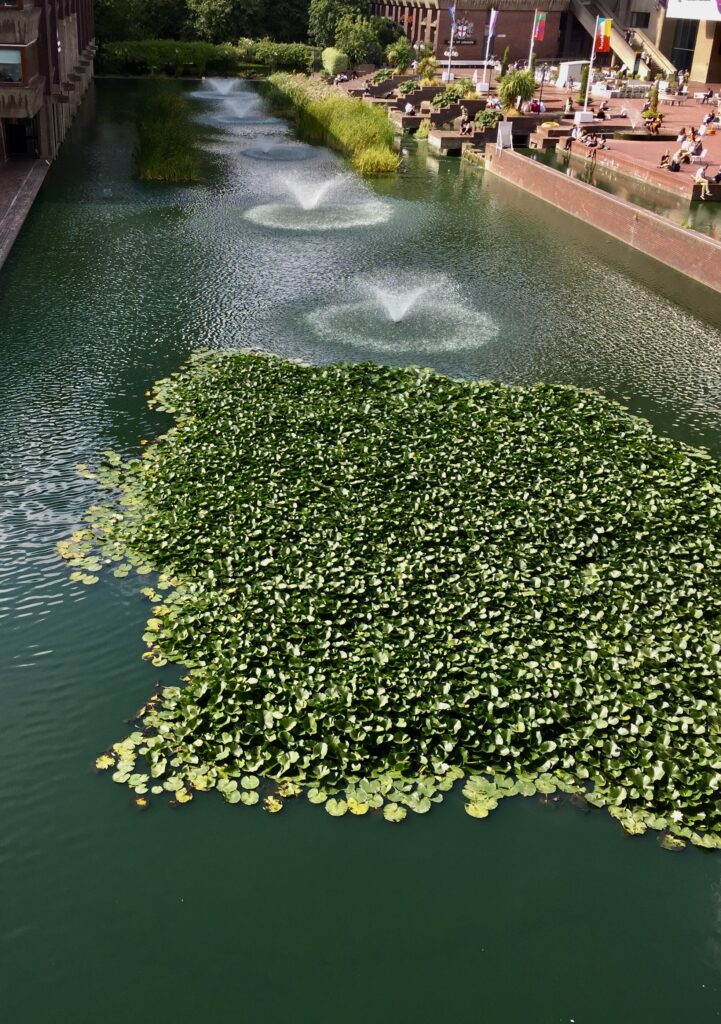
Pigeons who don’t like the rain …

And, the weird contribution, what may or may not be a fashion shoot …

It’s definitely a fella …
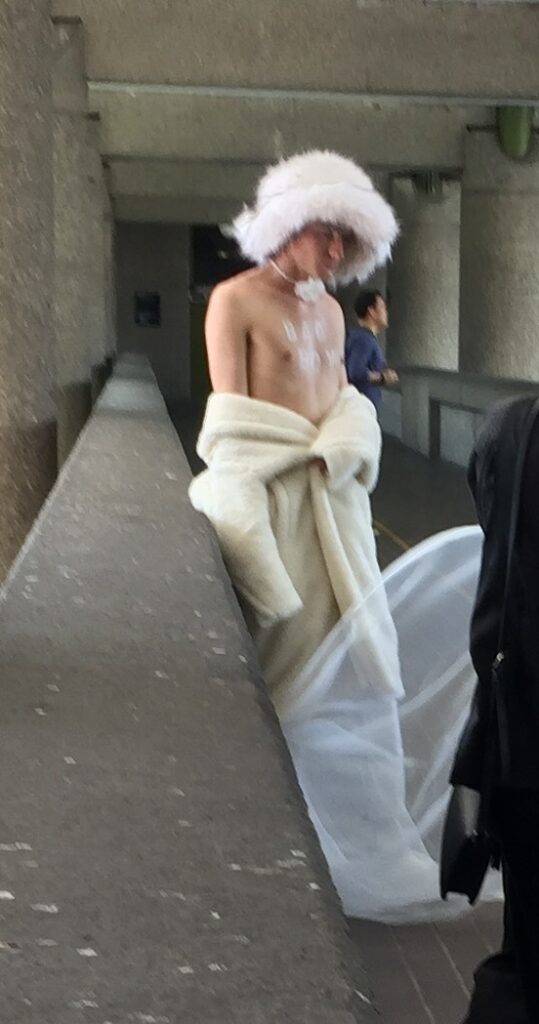
If you would like to follow me on Instagram here is the link …

